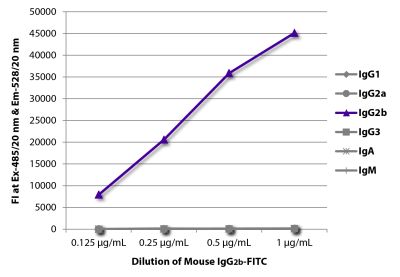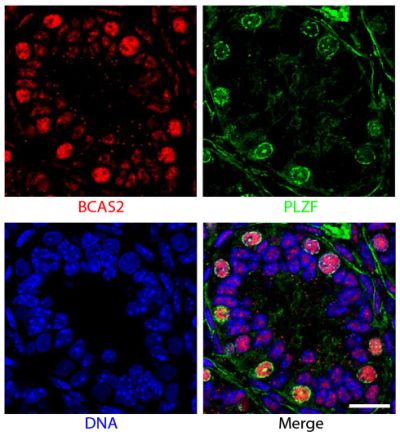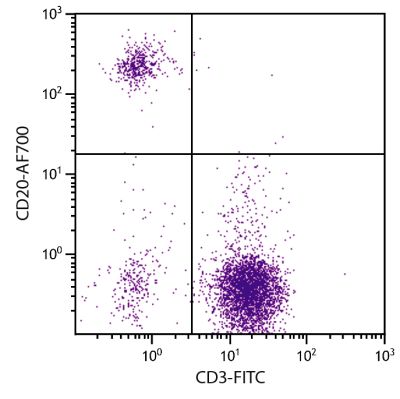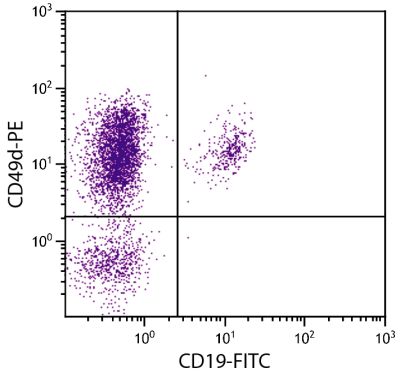Mouse Anti-Human CD9-FITC (MM2/57)
Only %1 left
Cat. No.:
9310-02,
9310-02S
FITC Anti-Human CD9 antibody for use in flow cytometry, immunohistochemistry / immunocytochemistry, and western blot assays.
As low as
$99.00
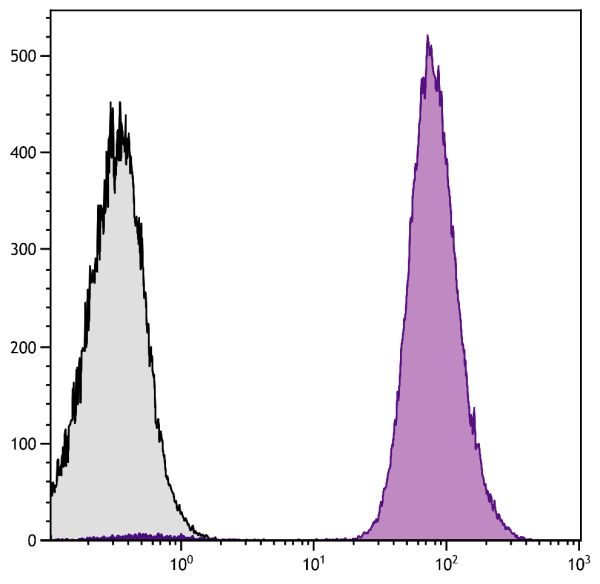

| Clone | MM2/57 |
|---|---|
| Isotype | Mouse IgG2bκ |
| Isotype Control | Mouse IgG2b-FITC (A-1) |
| Specificity | Human/Hamster/Canine/Feline/Monkey/Rabbit/Raccoon CD9 |
| Alternative Names | MRP-1, MIC3, DRAP-27, p24 |
| Description | CD9 is a 24 kDa member of the transmembrane 4 superfamily (TM4-SF) of cell surface receptors. It is expressed strongly on platelets, lymphoid progenitor cells, activated lymphocytes and endothelia, and, weakly, on eosinophils, granulocytes, monocytes, and macrophages. CD9 functions as an adhesion molecule where it mediates platelet aggregation and activation. |
| Conjugate | FITC (Fluorescein) |
| Buffer Formulation | Phosphate buffered saline containing < 0.1% sodium azide |
| Clonality | Monoclonal |
| Concentration | Lot specific |
| Volume | 0.25 mL or 1.0 mL |
| Recommended Storage | 2-8°C; Avoid exposure to light |
| Applications |
Flow Cytometry – Quality tested 1,2,4-9 Immunohistochemistry-Frozen Sections – Reported in literature 7,8 Immunocytochemistry – Reported in literature 2 Immunoprecipitation – Reported in literature 1,2,9 Western Blot – Reported in literature 2,3,9 |
| RRID Number | AB_2796723 |
| Gene ID |
928 (Human) 101841222 (Hamster) 611695 (Canine) 493874 (Feline) 103218443 (Green Monkey) 100345844 (Rabbit) |
| Gene ID Symbol |
CD9 (Human) Cd9 (Hamster) CD9 (Canine) CD9 (Feline) CD9 (Green Monkey) CD9 (Rabbit) |
| Gene ID Aliases | BTCC-1; DRAP-27; MIC3; MRP-1; TSPAN-29; TSPAN29 |
| UniProt ID |
P21926 (Human P40239 (Feline P30409 (Green Monkey |
| UniProt Name |
CD9_HUMAN (Human) CD9_FELCA (Feline) CD9_CHLAE (Green Monkey) |
Documentation
Certificate of Analysis Lookup
Enter the Catalog Number and Lot Number for the Certificate of Analysis you wish to view
- 1. Wilkinson JM, Galea-Lauri J, Sellars RA, Boniface C. Identification and tissue distribution of rabbit leucocyte antigens recognized by monoclonal antibodies. Immunology. 1992;76:625-30. (FC, IP, Rabbit Reactivity)
- 2. Kurita-Taniguchi M, Hazeki K, Murabayashi N, Fukui A, Tsuji S, Matsumoto M, et al. Molecular assembly of CD46 with CD9, alpha3-beta1 integrin and protein tyrosine phosphatase SHP-1 in human macrophages through differentiation by GM-CSF. Mol Immunol. 2001;38:689-700. (FC, IP, WB, ICC)
- 3. Kamisasanuki T, Tokushige S, Terasaki H, Khai NC, Wang Y, Sakamoto T, et al. Targeting CD9 produces stimulus-independent antiangiogenic effects predominantly in activated endothelial cells during angiogenesis: a novel antiangiogenic therapy. Biochem Biophys Res Commun. 2011;413:128-35. (WB)
- 4. Hohdatsu T, Hirabayashi H, Motokawa K, Koyama H. Comparative study of the cell tropism of feline immunodeficiency virus isolates of subtypes A, B and D classified on the basis of the env gene V3-V5 sequence. J Gen Virol. 1996;77:93-100. (FC, Feline Reactivity)
- 5. Nishimura Y, Goto Y, Yoneda K, Endo Y, Mizuno T, Hamachi M, et al. Interspecies transmission of feline immunodeficiency virus from the domestic cat to the Tsushima cat (Felis bengalensis euptilura) in the wild. J Virol. 1999;73:7916-21. (FC, Feline Reactivity)
- 6. Yoon S, Zhang X, Freedman AS, Zahrieh D, Lossos IS, Li L, et al. Down-regulation of CD9 expression and its correlation to tumor progression in B lymphomas. Am J Pathol. 2010;177:377-86. (FC)
- 7. Yoon S, Zhang X, Lee IY, Spencer N, Vo P, Choi YS. CD9 is a novel marker for plasma cell precursors in human germinal centers. Biochem Biophys Res Commun. 2013;431:41-6. (FC, IHC-FS)
- 8. Yoon S, Lee IY, Zhang X, Zapata MC, Choi YS. CD9 may contribute to the survival of human germinal center B cells by facilitating the interaction with follicular dendritic cells. FEBS Open Bio. 2014;4:370-6. (FC, IHC-FS)
- 9. Löffler S, Lottspeich F, Lanza F, Azorsa DO, ter Meulen V, Schneider-Schaulies J. CD9, a tetraspan transmembrane protein, renders cells susceptible to canine distemper virus. J Virol. 1997;71:42-9. (FC, WB, IP, Canine, Feline, Rabbit, Monkey, Raccoon, and Hamster Reactivity)
See All References


